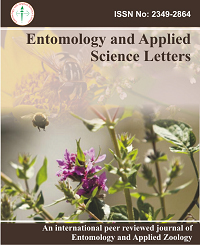
Applied Science Letters


This scientific work describes a new way of analyzing the organization of bone tissue using computed tomography(CT). The information obtained as a result of such a study can be used for the diagnosis of bone diseases, as well as in research in the biology and medicine field. The common lizard was chosen as a test subject, and the bones of the proximal tail vertebrae were selected as samples for studying the structural organization of bone tissue. The samples must be clean and in good condition for the data obtained to be reliable. A laboratory microtomograph was used in this study. The purpose of the present study is to investigate both the spatial distribution of the X-ray absorption coefficients and the distribution of the elemental compositions in bone tissue, which has not been studied to a large extent so far. The absorption density of these vertebrae varies greatly depending on the experimental conditions and pharmaceutical manufacturing processes. Areas of increased density were identified located closer to the central canal of the vertebra.
INTRODUCTION
Advances in the fields of nano- and micro technologies, microbiology, and biomedical diagnostics, are associated with the development of modern methods for non-destructive studies of the internal structure of complex objects [1-3]. One of the currently existing methods of such diagnosis is the method of X-ray introscopy [4]. X-ray computed tomography techniques are advanced methods of X-ray introscopy or, more specifically, X-ray microscopy and are excellent for a wide range of investigations [5-7].
Wilhelm Conrad Roentgen discovered X-ray radiation [8]. He was the first person to publish his paper on X-rays. Due to the high penetrating power of X-ray radiation, non-destructive testing of the studied objects became possible for researchers [9]. X-ray computed tomography has become relevant in many fields of science, such as medicine, geology, materials science, archaeology, food science, etc. [10-14].
Many scientific groups around the world are currently working on the development of X-ray microscopy [15, 16]. After the creation of synchrotron radiation sources in the middle of the last century, many experiments have been carried out with them [17, 18]. Modern microelectronics developments have created digital detectors with high spatial resolution making it possible to acquire images within seconds [19, 20]. The latest developments in the fields of materials science, microelectronics, and nanotechnology contribute to the development of manufacturing techniques for the production of X-ray optics. This improves the quality, significantly increases the information content of the images obtained, and increases their spatial resolution [21].
Microtomographs are an important tool for studying biological samples at the microscopic level [22]. Some of the applications of microtomography in biology include:
In this work, the internal structure of vertebrate bone tissue was investigated. Of interest is both the spatial distribution of the X-ray absorption coefficient and the distribution of the elemental composition within the bone tissue, since these issues have been little studied to date.
MATERIALS AND METHODS
The common lizard (Lacerta agilis) was chosen as the subject of the study. The common lizard (Lacerta agilis) was chosen as the object of the study. The agile lizard, or common lizard, is a type of lizard in the real lizard family. It is a scaly reptile that is up to 25 cm long, with relatively short limbs and a tail that is almost twice its trunk in length. It is brown with dark and light spots and stripes. It has a light lower abdomen. The skull is flexibly connected to the spine but has only one appendage. The skeleton of a lizard is notable for its well-developed ribs from its chest. Its dry skin is covered with horny scales as shields [28]. The divisions of the reptilian digestive system include the oral cavity, pharynx, stomach, digestive glands, pancreas, liver, small and large intestines, and cloaca. The excretory organs include the kidneys, ureters, and bladder. The skeleton is entirely bony. The spine is separated into five sections: cervical, thoracic, lumbar, sacral, and caudal. The head is mobile because of the elongation of the neck and the presence of two specialized cervical vertebrae [29].
The cervical spine has several vertebrae, the first two of which allow the head to turn in any direction. The thorax secures the shoulder girdle through the chest and supports the front legs. The lumbar region provides torso flexion that aids movement. The powerful sacral region already consists of two vertebrae and the girdle of the hind limbs is paralyzed. The long tail section provides balancing movements of the tail [30]. Breathing is only through the lungs. A suction breathing mechanism that is more perfect than in amphibians (respiration occurs by changing the volume of the chest). Conductive airways (larynx, trachea, bronchi) are well developed. The lining and septum of the lungs have a cellular structure. The heart has three chambers and consists of one ventricle and two atria.
An incomplete septum is formed in the ventricle. Although the macrocirculatory and microcirculatory circuits are not completely separated, the venous and arterial flows are more restricted, allowing the reptile body to be supplied with more oxygenated blood. Venous blood from all organs of the body enters the right atrium, and arterial blood from the lungs enters the left atrium. When the ventricle contracts, its incomplete septum reaches the dorsal wall and separates the right and left halves. From the left half of the ventricle, arterial blood enters the vessels of the brain and the anterior part of the body, from the right half venous blood, goes to the pulmonary artery and then to the lungs. The trunk receives mixed blood from both halves of the ventricle.
The brain is more developed, especially the hemispheres of the forebrain (responsible for complex instincts), the visual lobes, and the cerebellum (coordinator of movements). The senses are more complicated. Reptile eyes distinguish between mobile and stationary objects. The lens in the eyes can not only move but also change its curvature. Lizards have movable eyelids. In the organs of smell, part of the nasopharyngeal passage is divided into the olfactory and respiratory departments. The internal nostrils open closer to the pharynx, so reptiles can breathe freely when they have food in their mouth [31].
To check the structural organization of the lizard's bone tissue, the bones of the proximal tail vertebrae were selected as samples for the study. Two samples were examined, and the characteristic dimensions of these objects did not exceed several millimeters.
Bone tissue sampling is an important step in microtomographic examination. It determines whether researchers come to accurate and complete conclusions:
A sample of bone tissue must be taken from a place that has not changed its structure and has not narrowed as a result of mechanical action.
It is prohibited to use a sample that has been treated with a chemical substance for preservation.
The bone tissue sample must be preserved under special conditions to prevent deformation that affects the result.
Tomographic studies of the volumetric structure of animal bone tissue samples were carried out on a laboratory X-ray microtomograph HeliScan micro CT (Thermo Scientific) (FEI, USA) in two X-ray modes (5.4 and 12.0 kV).
RESULTS AND DISCUSSION
Tomographic studies of the volumetric structure of animal bone tissue samples were performed on a laboratory X-ray microtomograph. Typical results of the restoration of the internal structure of the samples are shown in Figure 1.
|
|
|
a) |
|
|
|
b) |
|
Figure 1. Tomographic reconstruction of the vertebrae of a lizard samples a, b. |
The studies were carried out at various X-ray energies (5.4 and 12.0 kv). In the samples, areas that absorb significantly more than the rest of the bone tissue were found (Figure 2). This may indicate that it is in these areas (located closer to the central canal of the vertebra) that heavy elements are localized. In addition, the experimental results show that the peripheral areas of the studied samples do not contain elements with an atomic number greater than 20 (which corresponds to calcium atoms) or their concentration is less than the sensitivity of the method, since the absorption of X-ray radiation here varies in proportion to its wavelength.
|
|
|
a) |
|
|
|
b) |
|
|
|
c) |
|
|
|
d) |
|
Figure 2. Cross-sections of the spine of a lizard with a nimble. |
It was found that, depending on the experimental conditions and methods of preparation of drugs, the absorbing density of these vertebrae can vary markedly. Areas of increased density located closer to the central canal of the vertebra were identified. It should be noted that the ratio of absorption in different areas of bone tissue changes with varying wavelengths of probing X-ray radiation. This indirectly indicates the uneven distribution of the elemental composition in the volume of bones. The correlation of X-ray fluorescence analysis data with the results of X-ray microtomography has been established.
According to X-ray fluorescence analysis, the presence of several heavy elements (Fe, Ni, Cu, Zn, Br, Sr) in these structures was established for the first time and their uneven distribution was revealed. A comparison of electron microscopy data and X-ray fluorescence analysis shows that these elements are located in the depth of the bone tissue (clearly deeper than at a distance of 10 microns from its surface), which also corresponds to the results of X-ray microtomography.
CONCLUSION
In this work, the internal structure of vertebrate bone tissue was investigated. Of interest is both the spatial distribution of the X-ray absorption coefficient and the distribution of the elemental composition within the bone tissue. During computer microtomography, areas were found in the samples that absorb significantly more than the rest of the bone tissue. This suggests that heavy elements (Fe, Ni, Cu, Zn, Br, Sr) are localized in those areas. Thus, the uneven distribution of the elemental composition in the volume of bones is revealed.
ACKNOWLEDGMENTS: The authors are thankful to colleagues from Dagestan State Medical University for their assistance in experiments.
CONFLICT OF INTEREST: None
FINANCIAL SUPPORT: None
ETHICS STATEMENT: The protocol for experiments with beetles complied with the requirements of the European Convention for the protection of vertebrate animals used for experimental and other scientific purposes.
